A Flight To Remember: Traveling by Sea Plane
Trans Maldivian Airways plane parked at Conrad Rangali Island floating ‘terminal.’
There are only few places in the world where you can still experience flying on a seaplane. The Maldives is one of them. If fact, it is the base for the world’s largest airline whose entire fleet is seaplanes - Trans Maldivian Airways (TMA). Its fleet consists of 54 seaplanes, de Havilland Canada DHC-6 Twin Otter of various configurations. It flies to 76 destinations, covering Maldivian atolls and resort islands scattered in the Indian Ocean. The majority of the planes have red&white livery, though some planes feature different liveries, as seen below.
TMA has its own terminal at the Velana International Airport (VIA) in Male, the capital of the Maldives. After you arrive at the VIA and reach the transfer desk of your resort its representatives will take care of all the transfer formalities, including handling your luggage. They will take you to the TMA terminal in a car or a van since it’s not connected to the main terminal. There they will get your boarding passes and check in your luggage.
TMA check-in desk.
Your resort representative will handle your check-in.
In the pic above, you can see a passenger repacking her suitcase. Irrespective of the baggage allowance of your ticket to the Maldives, TMA limits each passenger to one checked-in piece and one piece of hand luggage. Ideally, the checked-in piece should weigh 27kg (60lb) though the maximum weight of 32kg (71lb) is acceptable. Hand piece should weigh 3kg (7lb). I noticed that there’s a little bit of leeway allowed for the hand piece. In any event, you should carefully weigh your luggage at home before setting on your trip to the Maldives. Otherwise you may be asked to remove access weight items and put them elsewhere as well as pay $5 plus 12% TGST per 1kg above the baggage allowance.
Please note that all luggage gets sanitized on arrival in the Maldives.
A very colorful boarding pass, invoking the olden days of air travel. I found it quite quirky that my resort, Conrad Rangali (as, I’m sure, all other resorts), has its own airport code - CON. All that there is to the airport is a floating deck, luggage weighing machine, and an arrivals lounge (see pics on my blog on my stay at Conrad).
Some resorts, like Conrad Rangali Island, have their own lounge where guests can wait until it’s boarding time. Otherwise, you will have to wait in the terminal which has an adequate sitting area, cafes and shops.
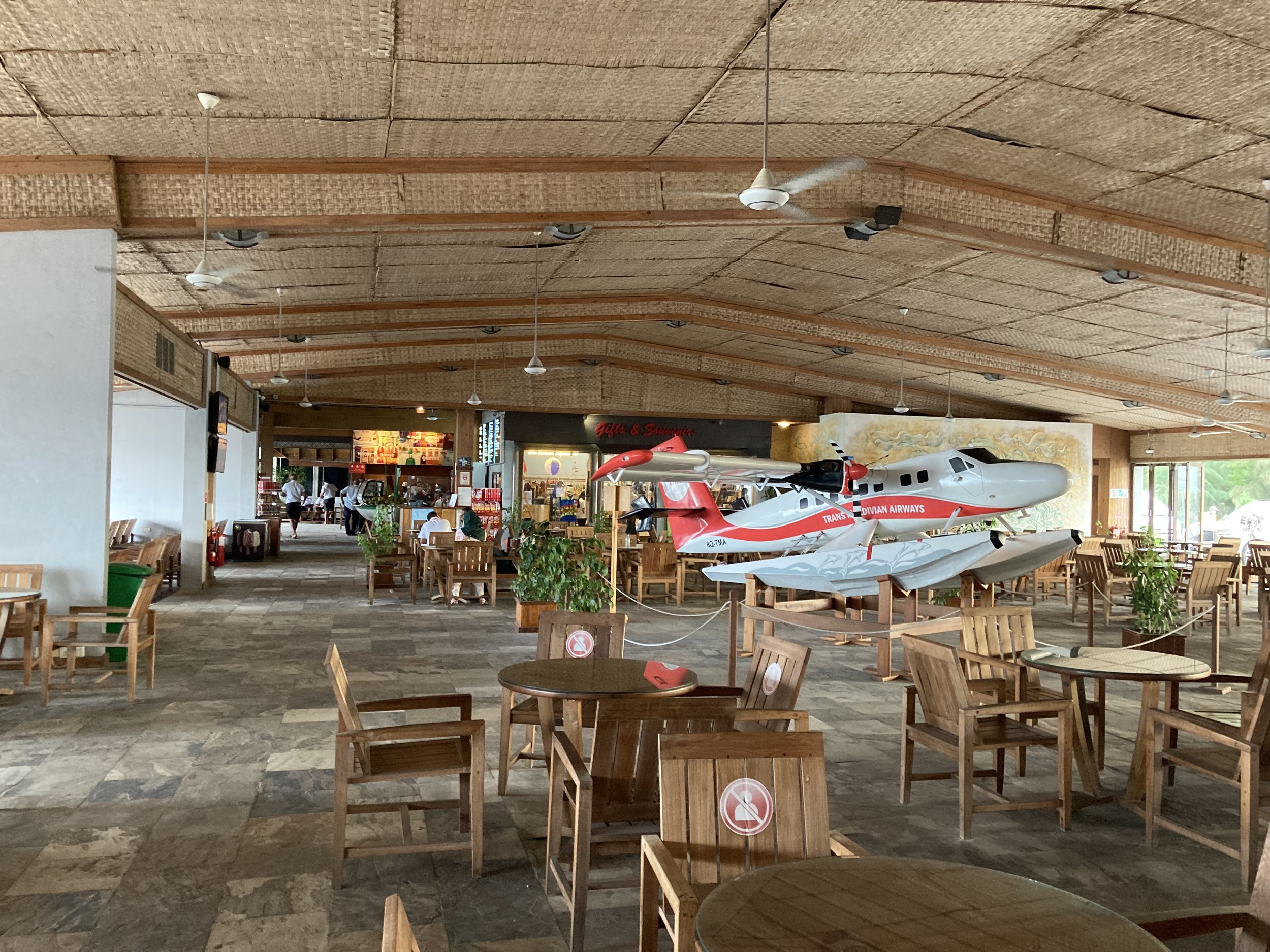

Once your plane is ready for boarding you will be escorted to your ‘gate.’
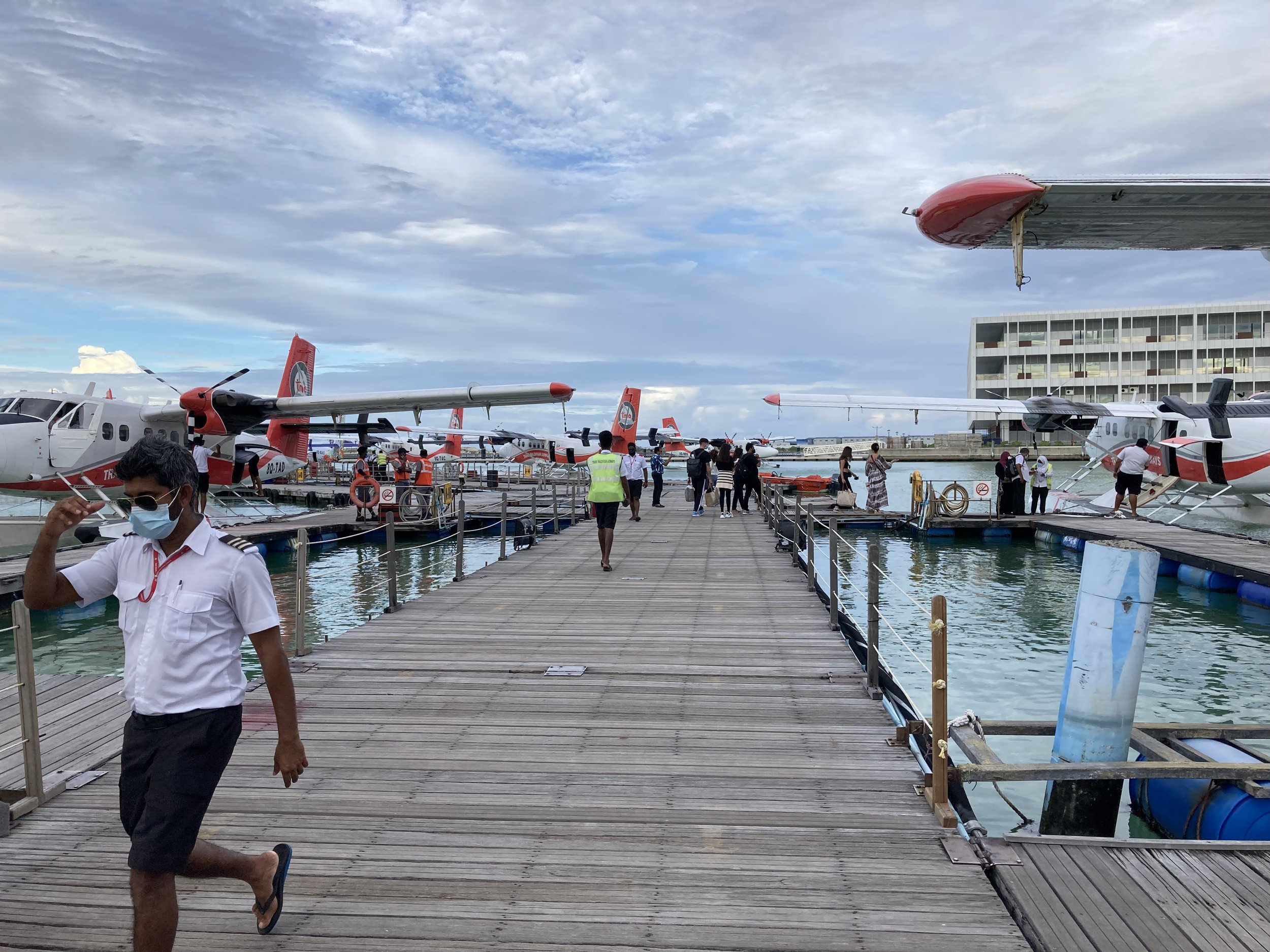

There are usually three crew members on the plane - a pilot, a co-pilot and, what I would like to call, an ‘anchor-man,’ who sits in the back of the plane and is responsible for tying and untying the plane to the ‘gate.’ That in particular requires quite a skill as you will soon be able to see in my video on my sgtravels YouTube channel. Meanwhile, please subscribe.
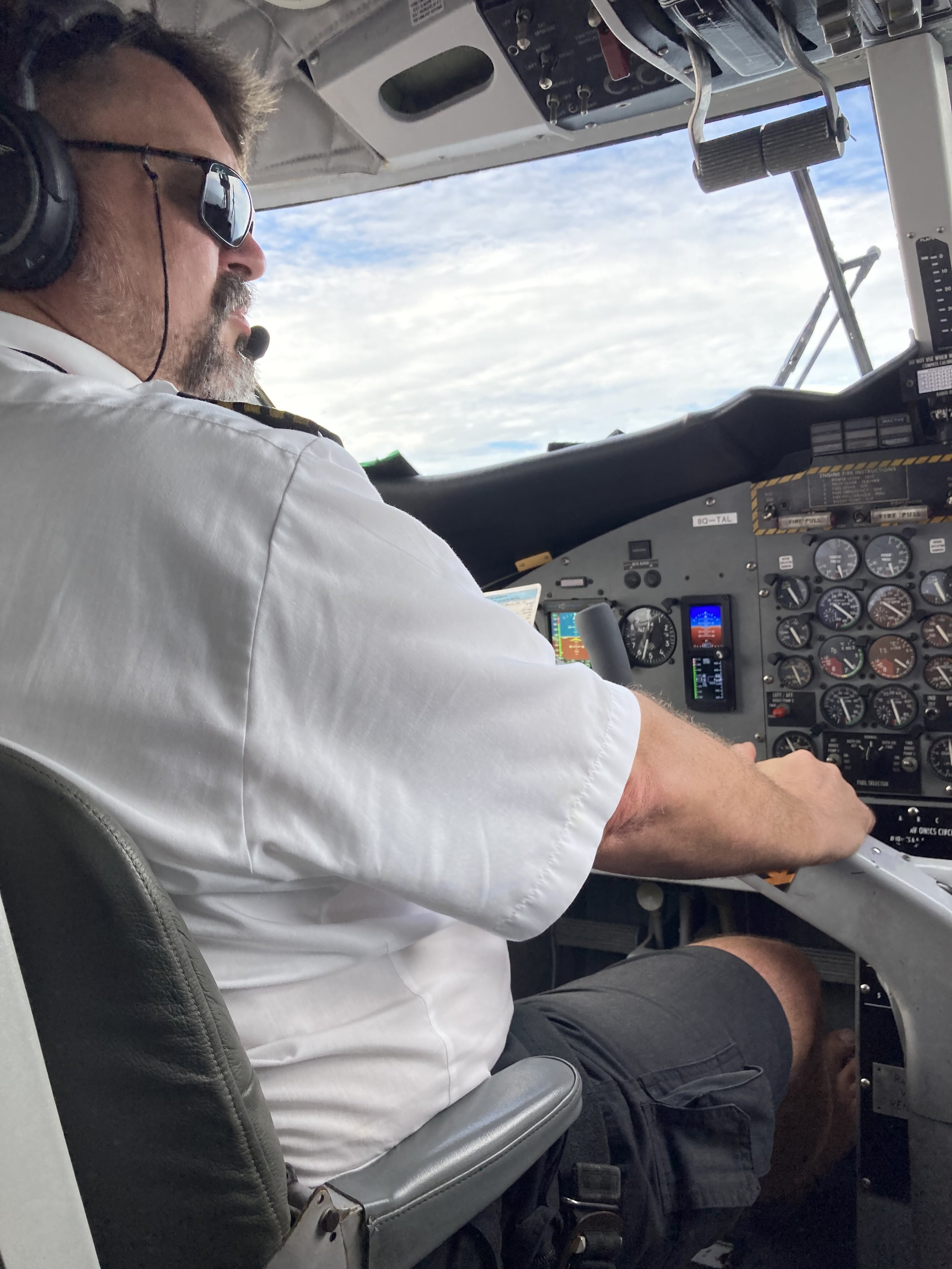
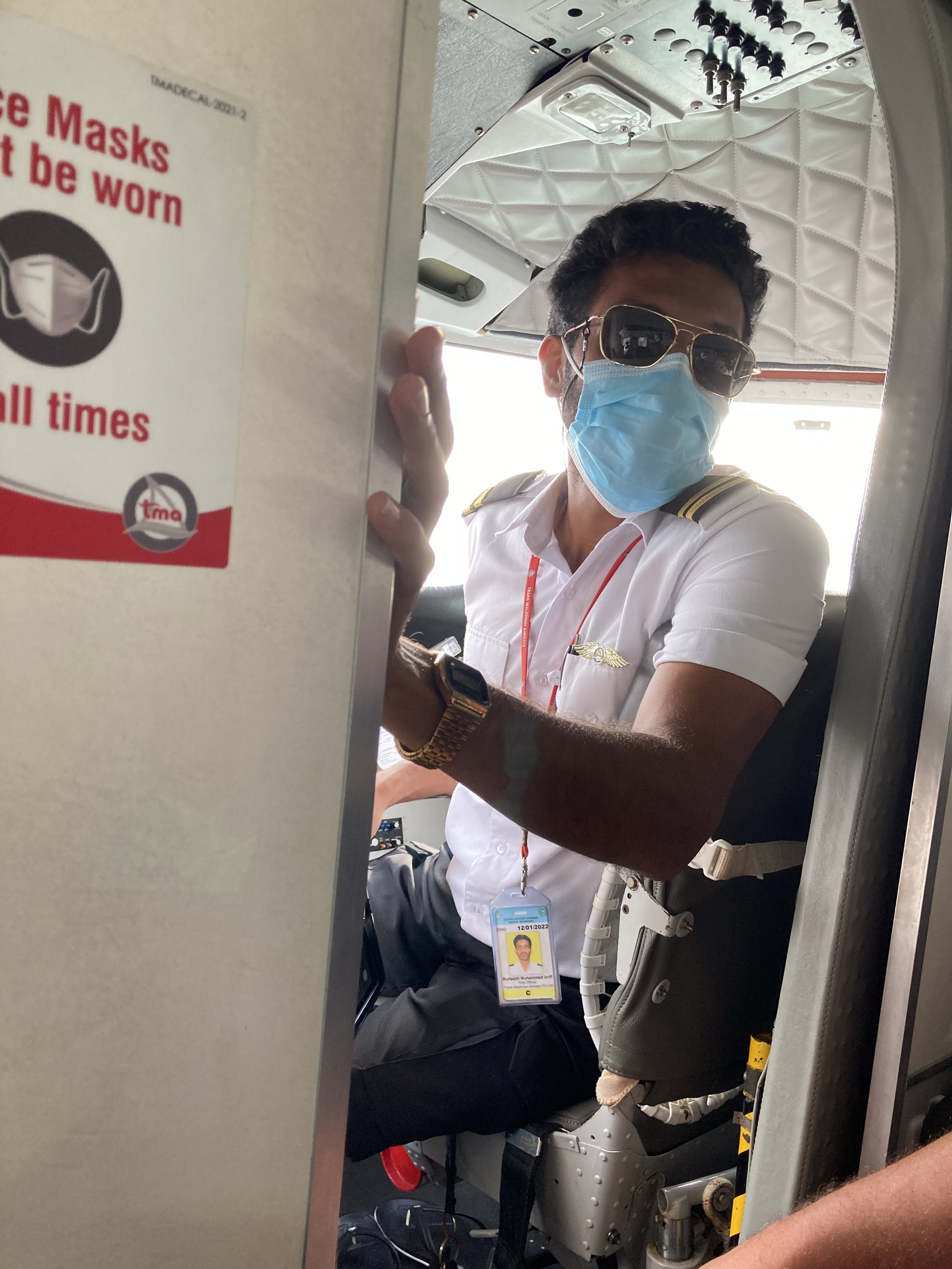

TMA pilots are known around the world as ‘barefoot pilots.’

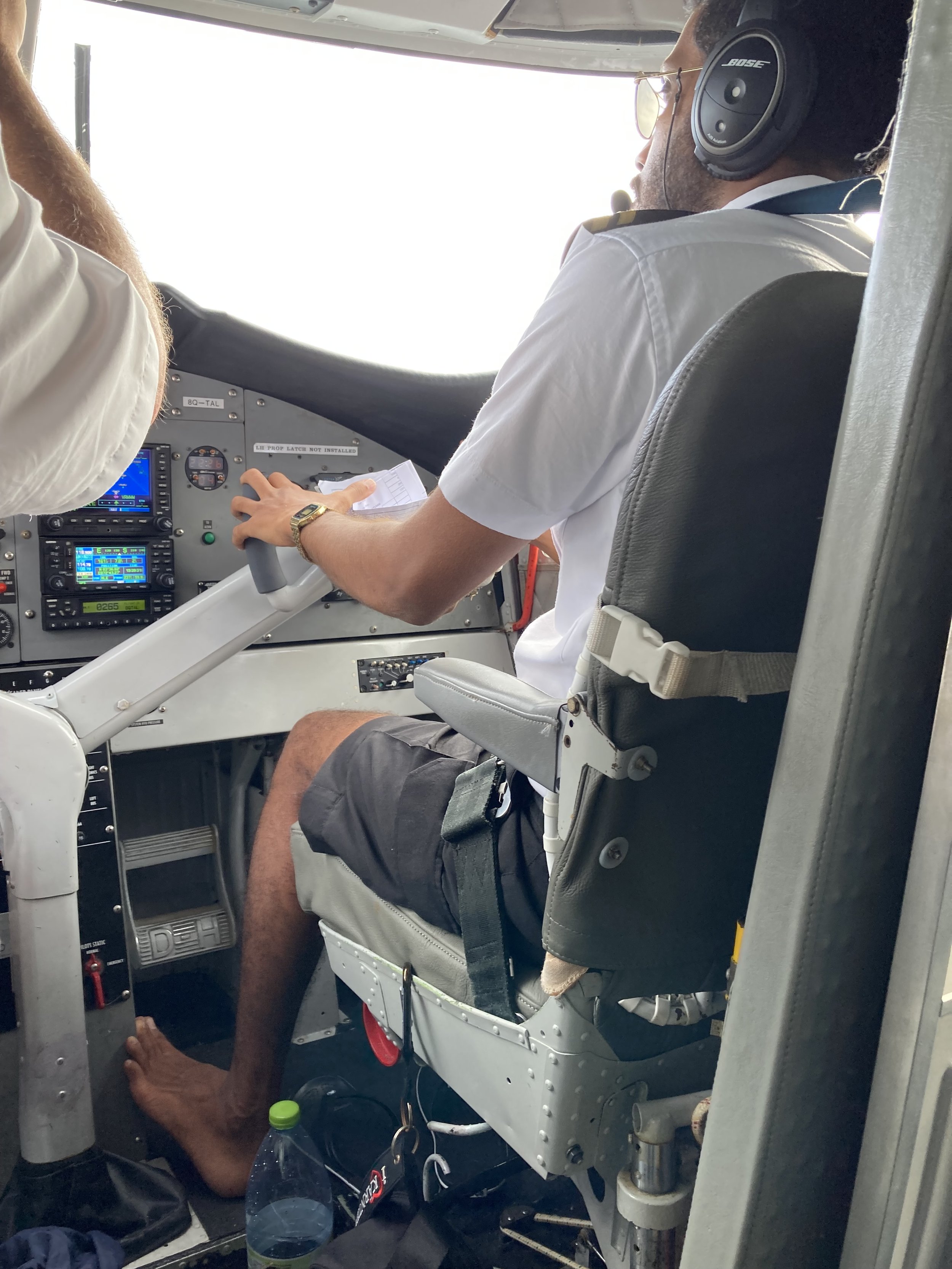
For AvGeeks, DHC-6 Twin Otter is a 19-passenger STOL (Short Takeoff and Landing) aircraft with 1-2 seat configuration. Once you board, you’ll immediately get the feeling of being crammed because of how narrow the cabin is, how low the ceiling is, and how small and uncomfortable the seats are. However, the aircraft is remarkably stable during the flight, so there is no reason to expect a turbulent ride.
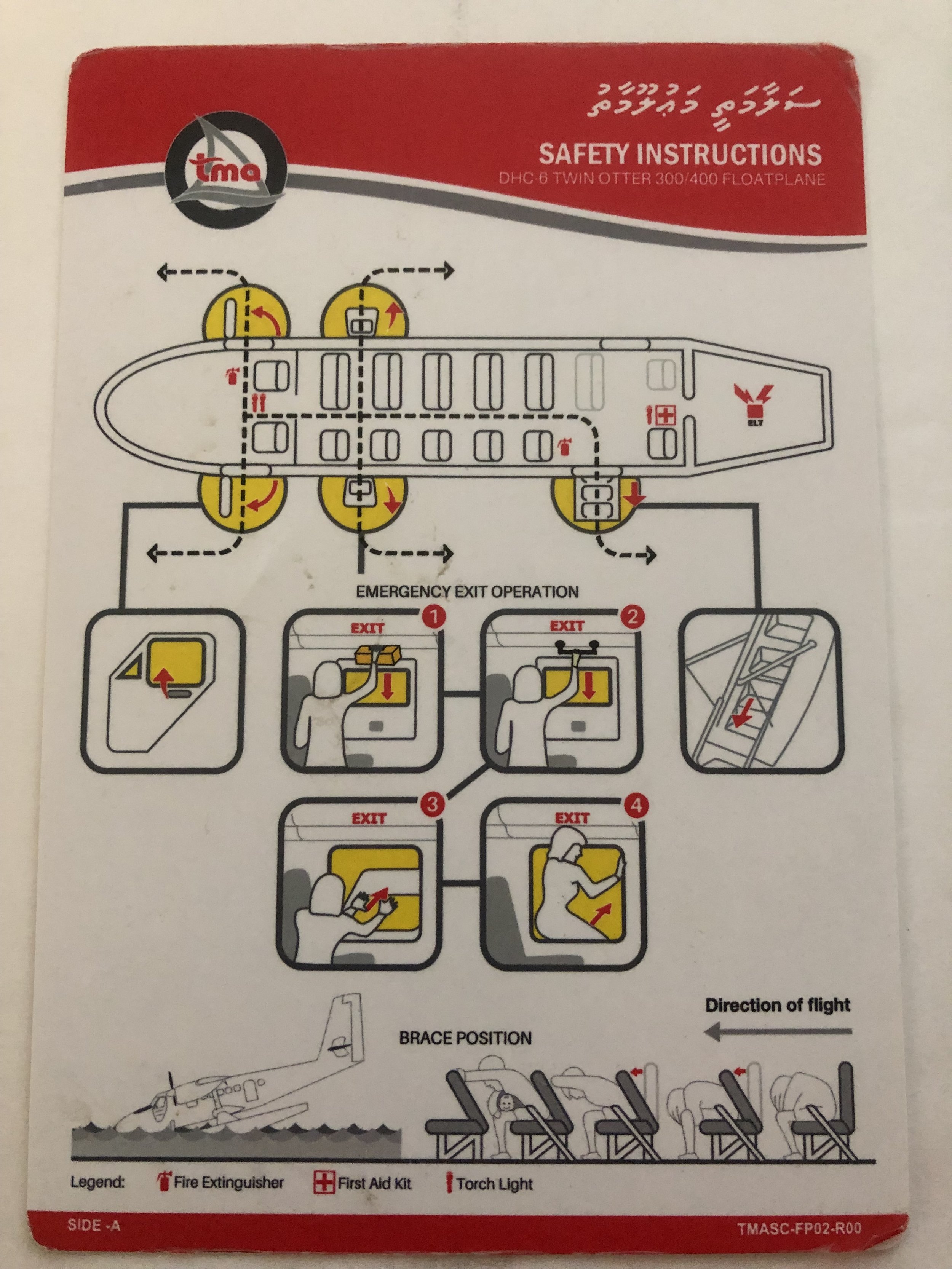
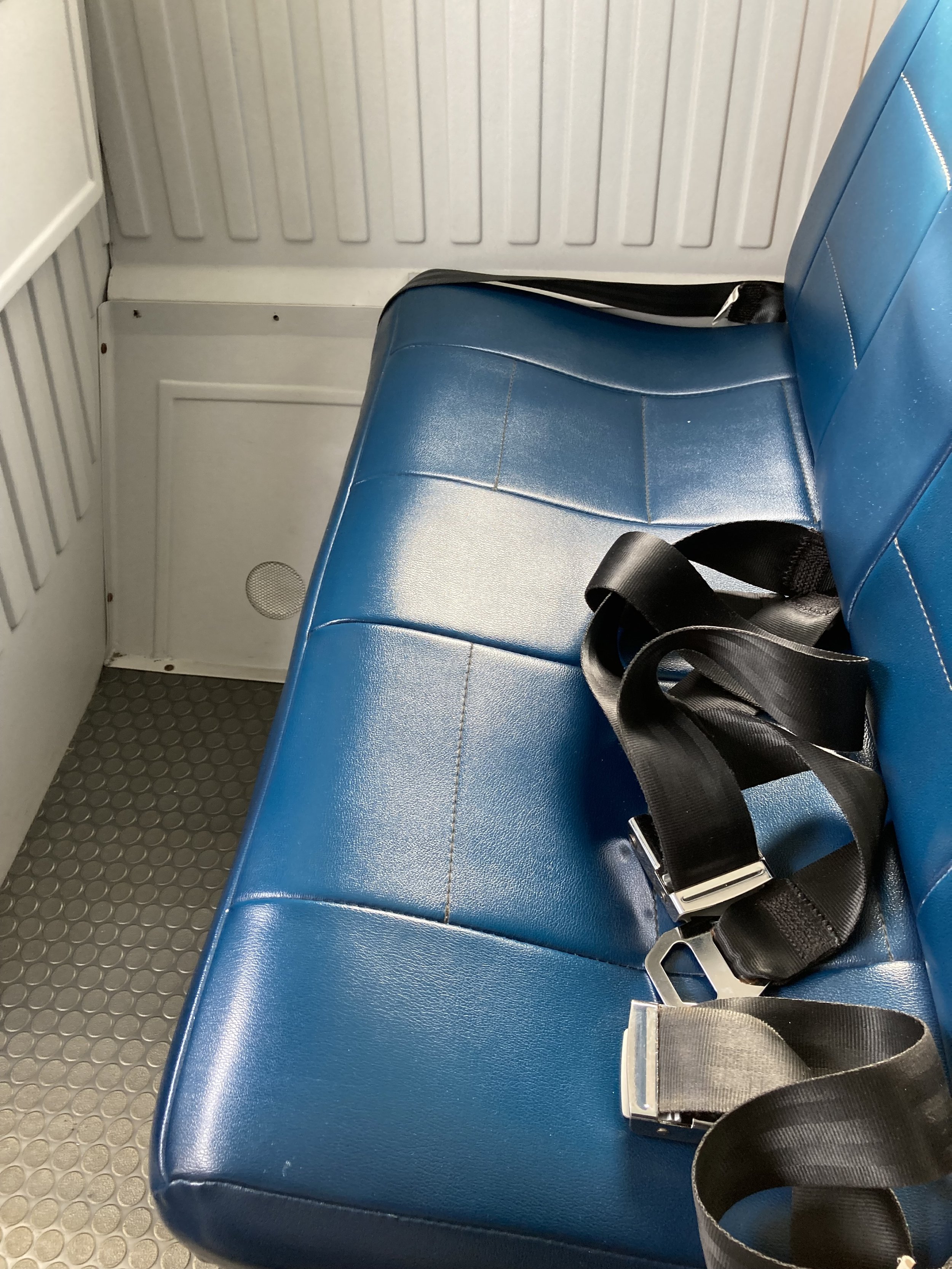
The seats feature individual air vents and reading lights, which is somewhat redundant given that flights operate only during daylight time. As I noticed, some, but not all planes have wall-mounted fans in the first row with quite a quirky warning sign (see below).

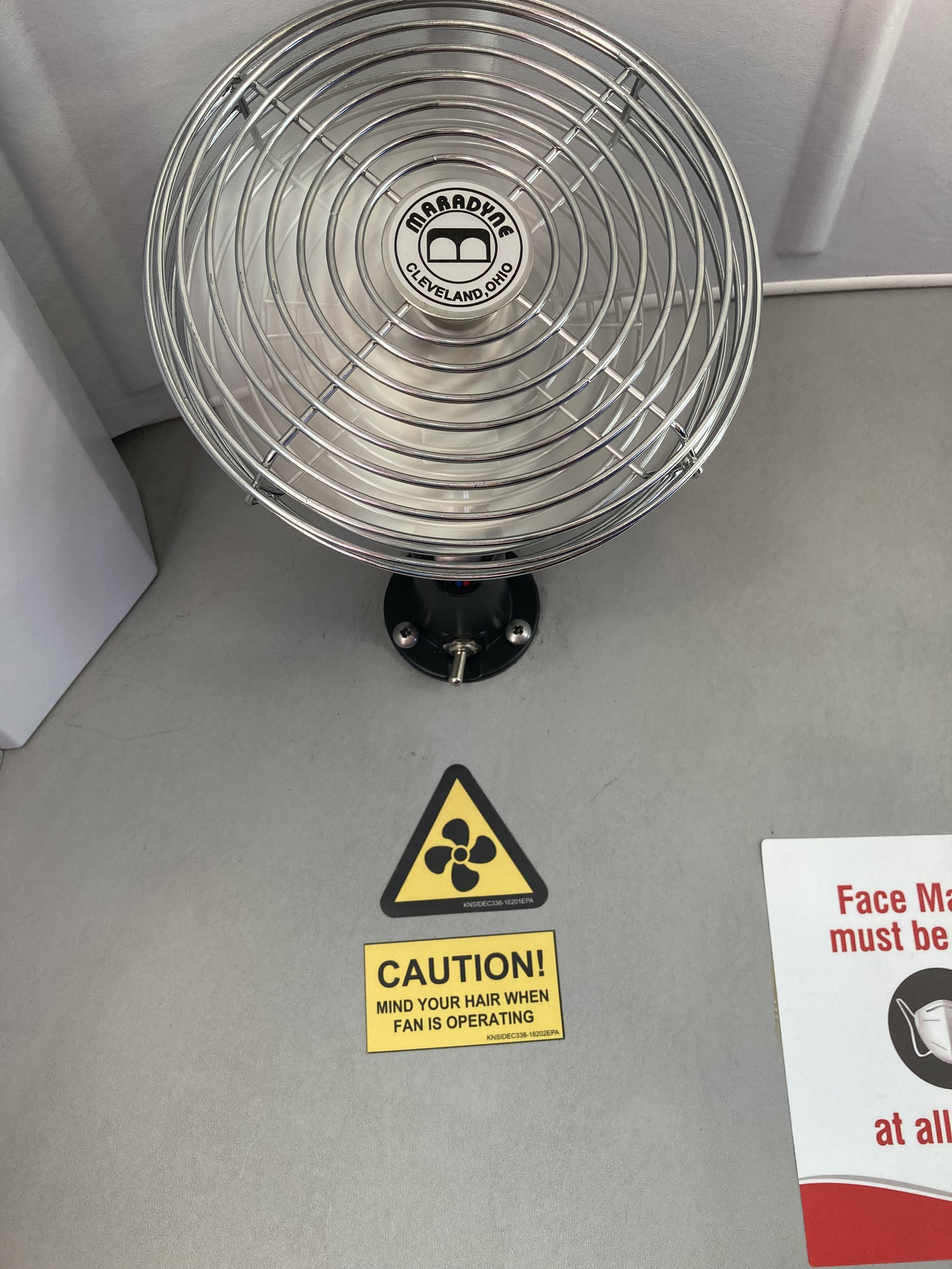
Once you take off you will be in for a treat of a bird's-eye view of the spectacular beauty of the Maldivian atolls and the Indian Ocean.
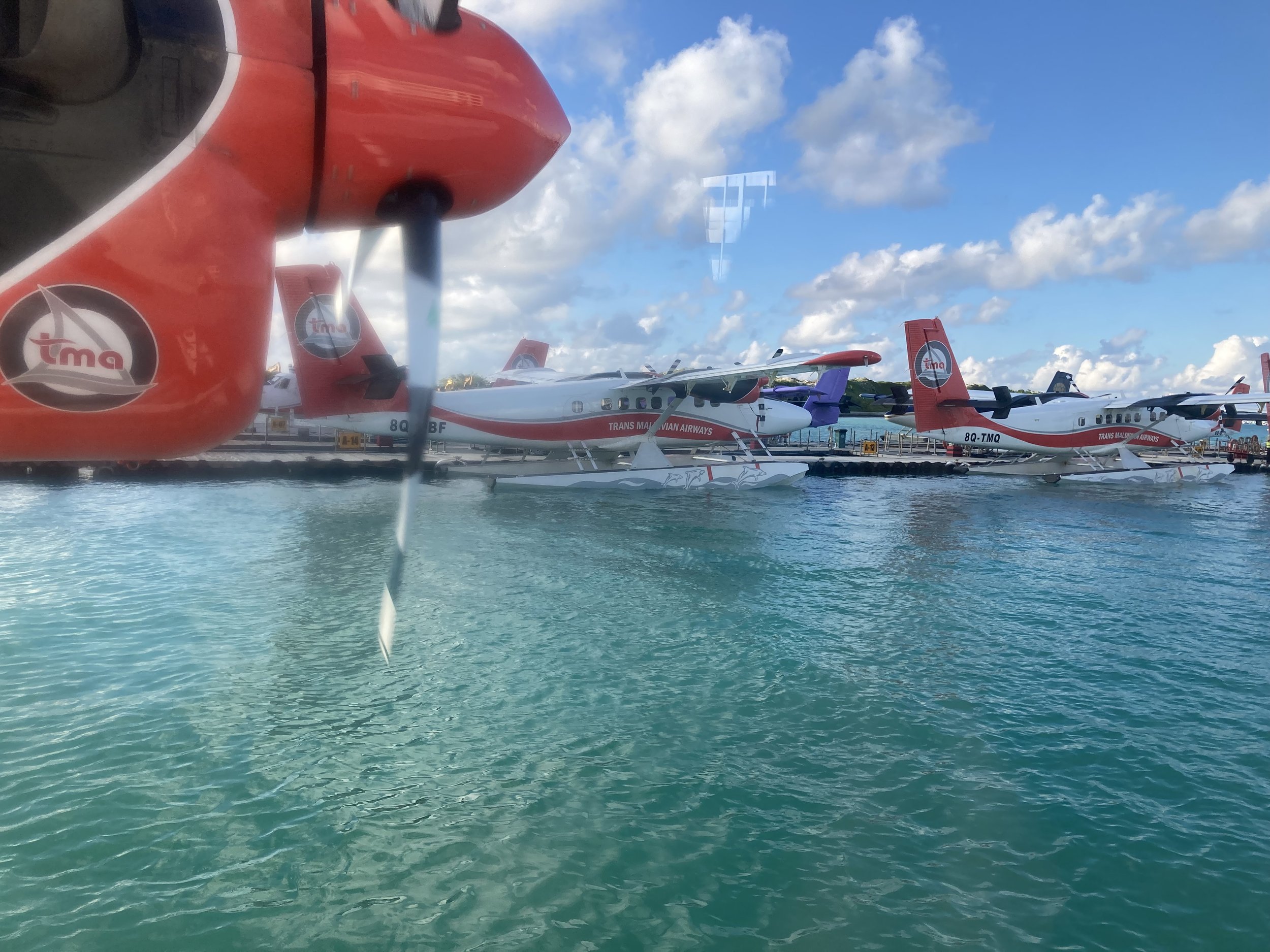
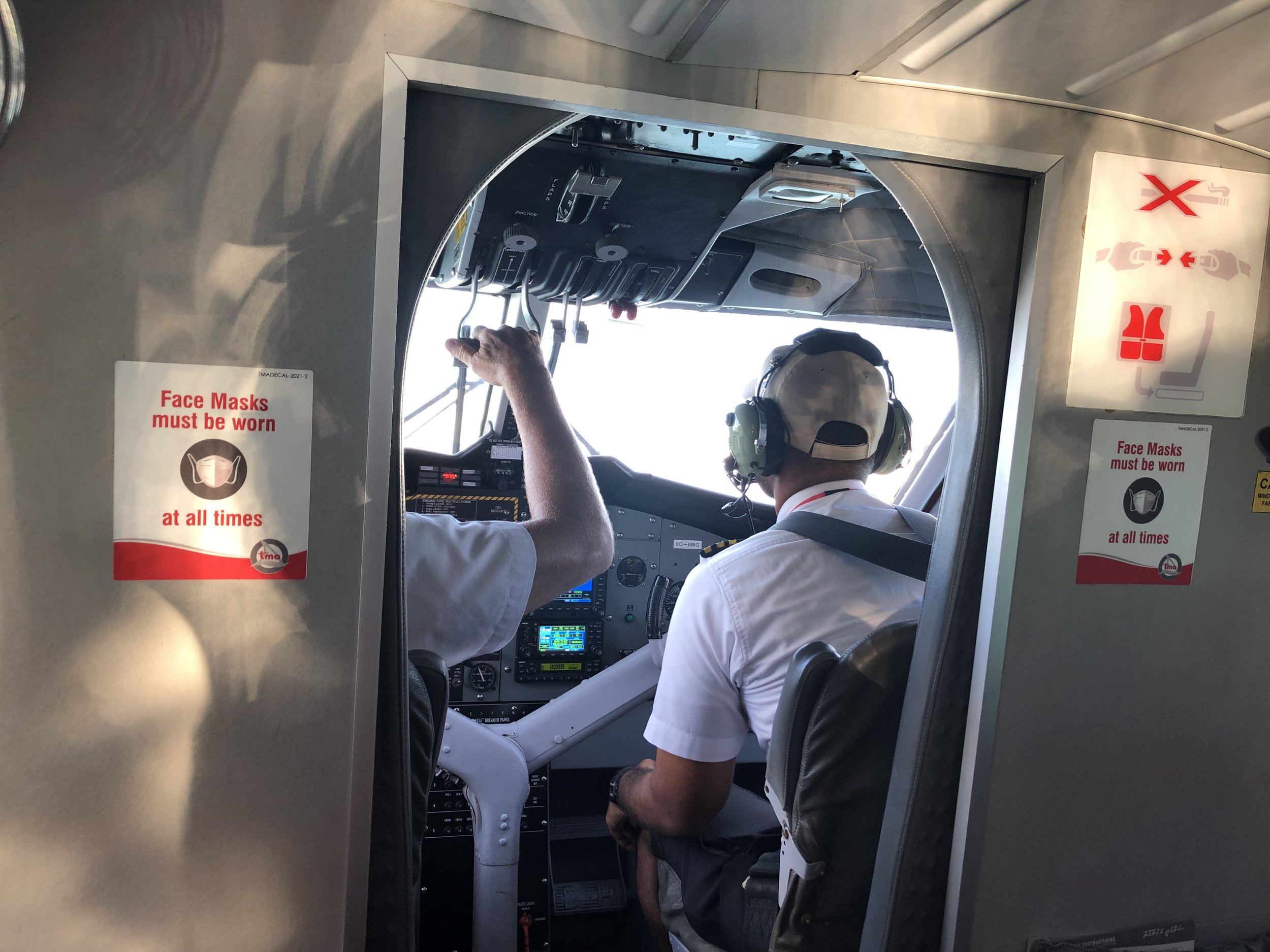
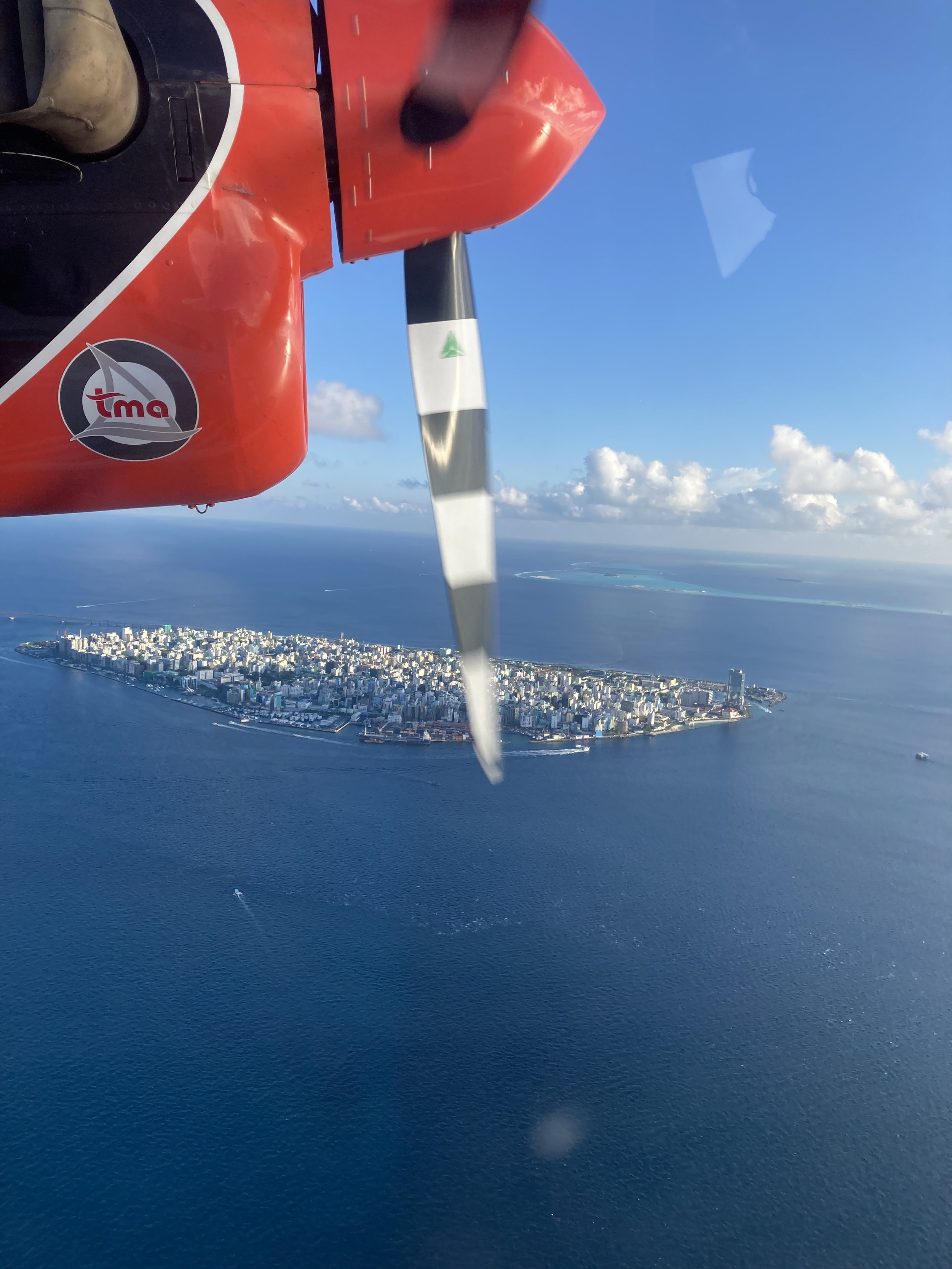
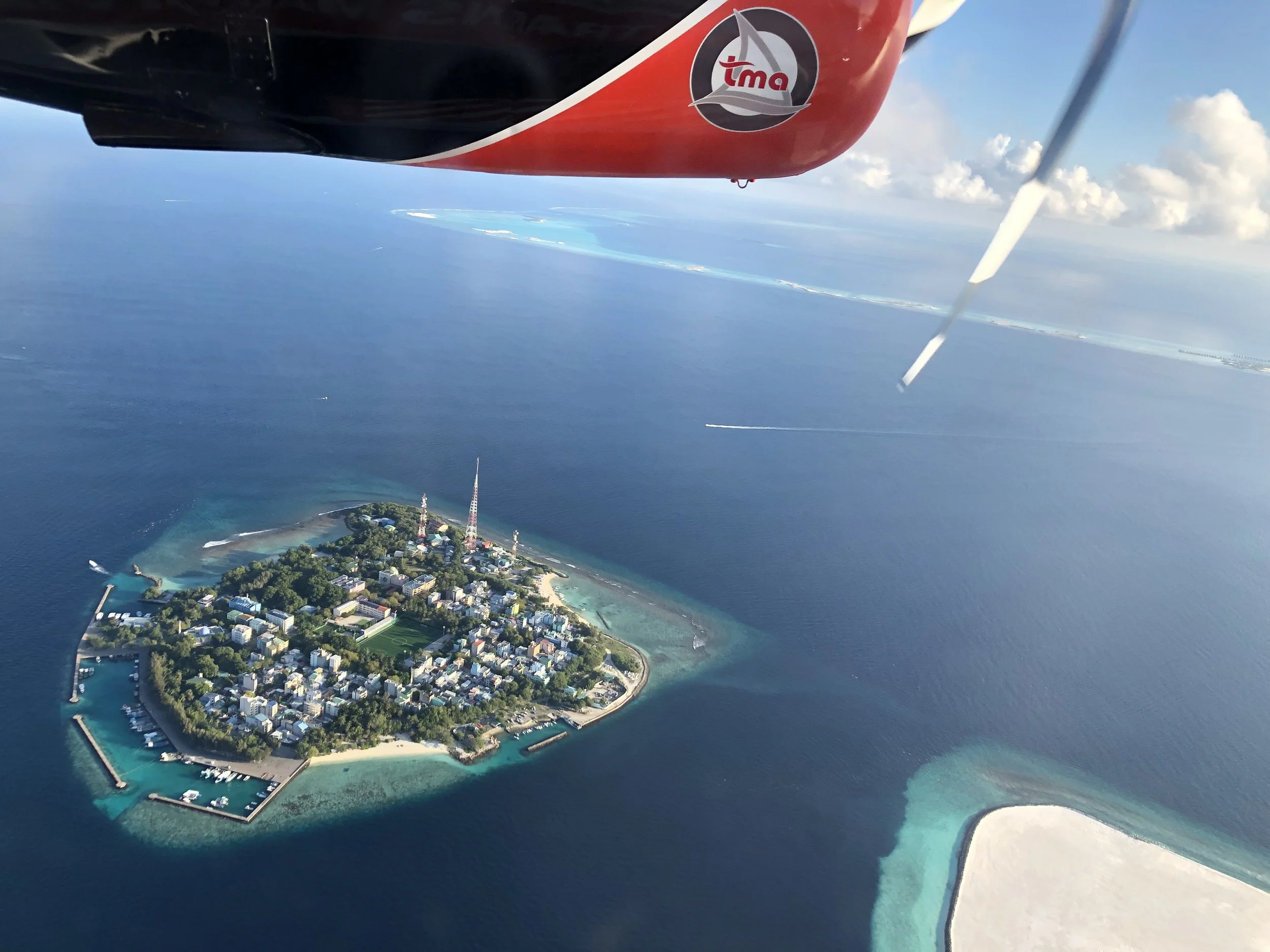

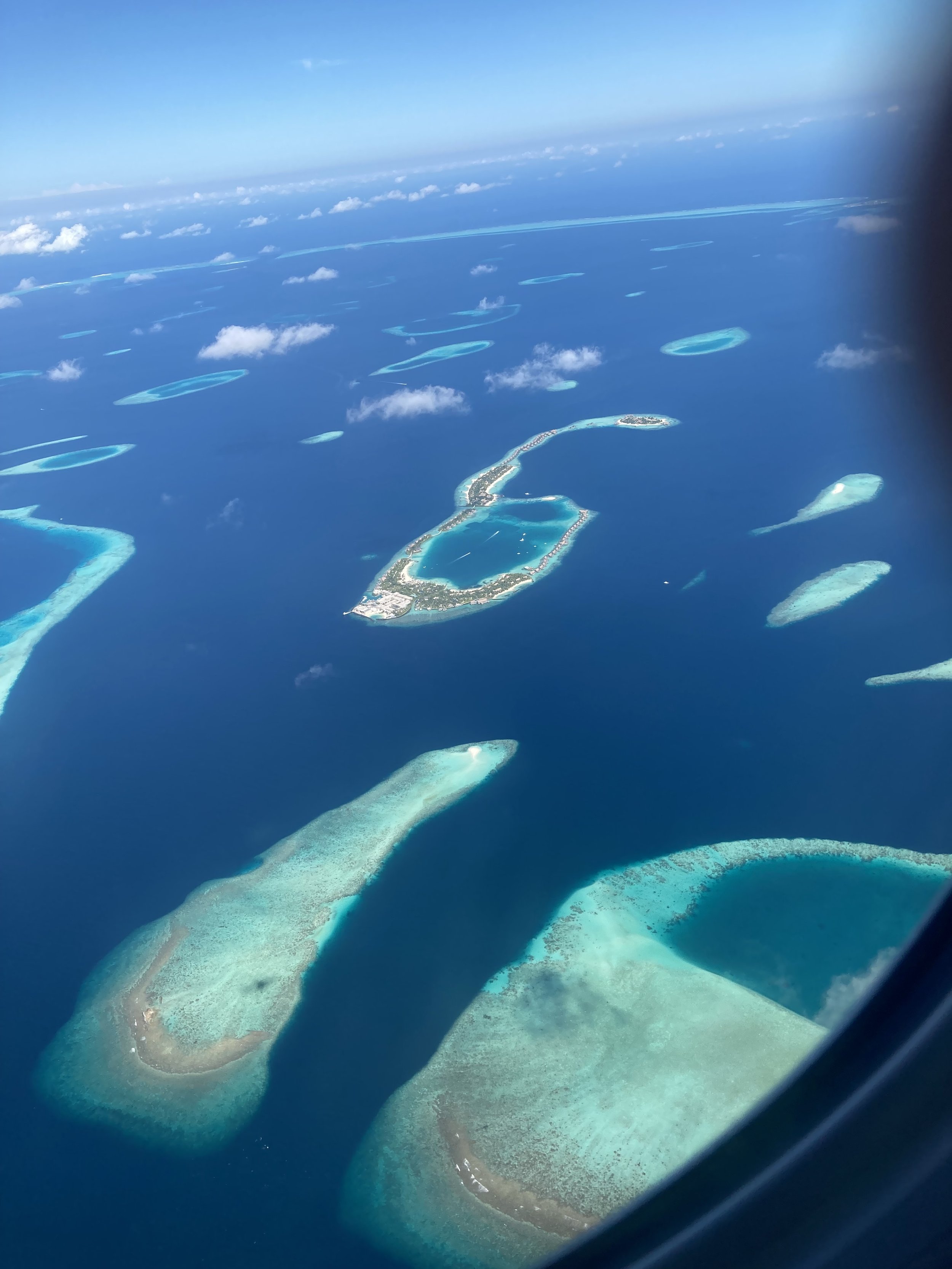
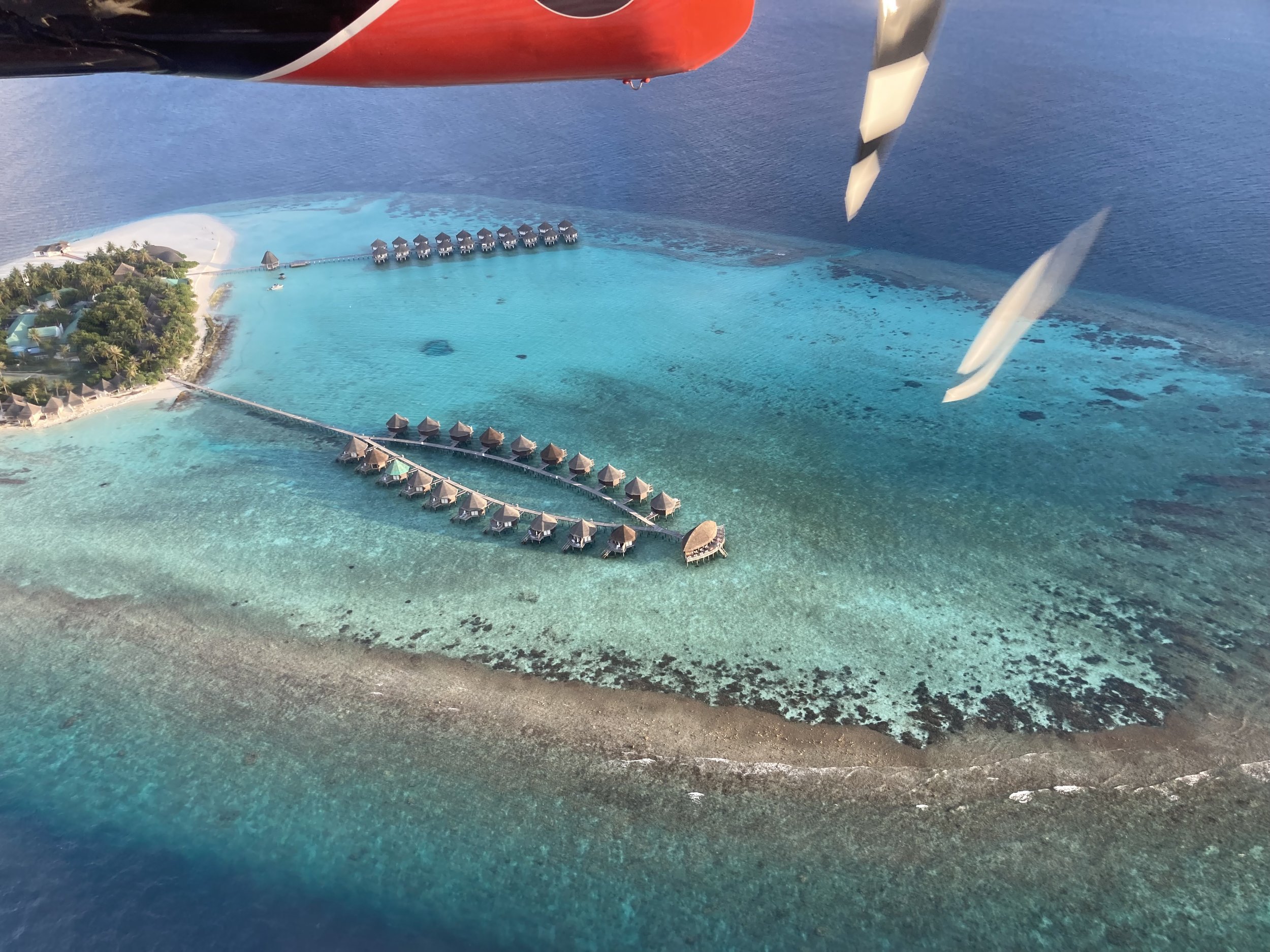
The plane, as I mentioned, is very stable, which gives you enough sense of safety to make the flight rather enjoyable. Even when flying through dark clouds or rain, as it happened on my way back, it was still quite comfortable. On the down side, the plane is quite noisy, so I would definitely recommend to bring ear plugs. Landings are not as bumpy as you would expect.
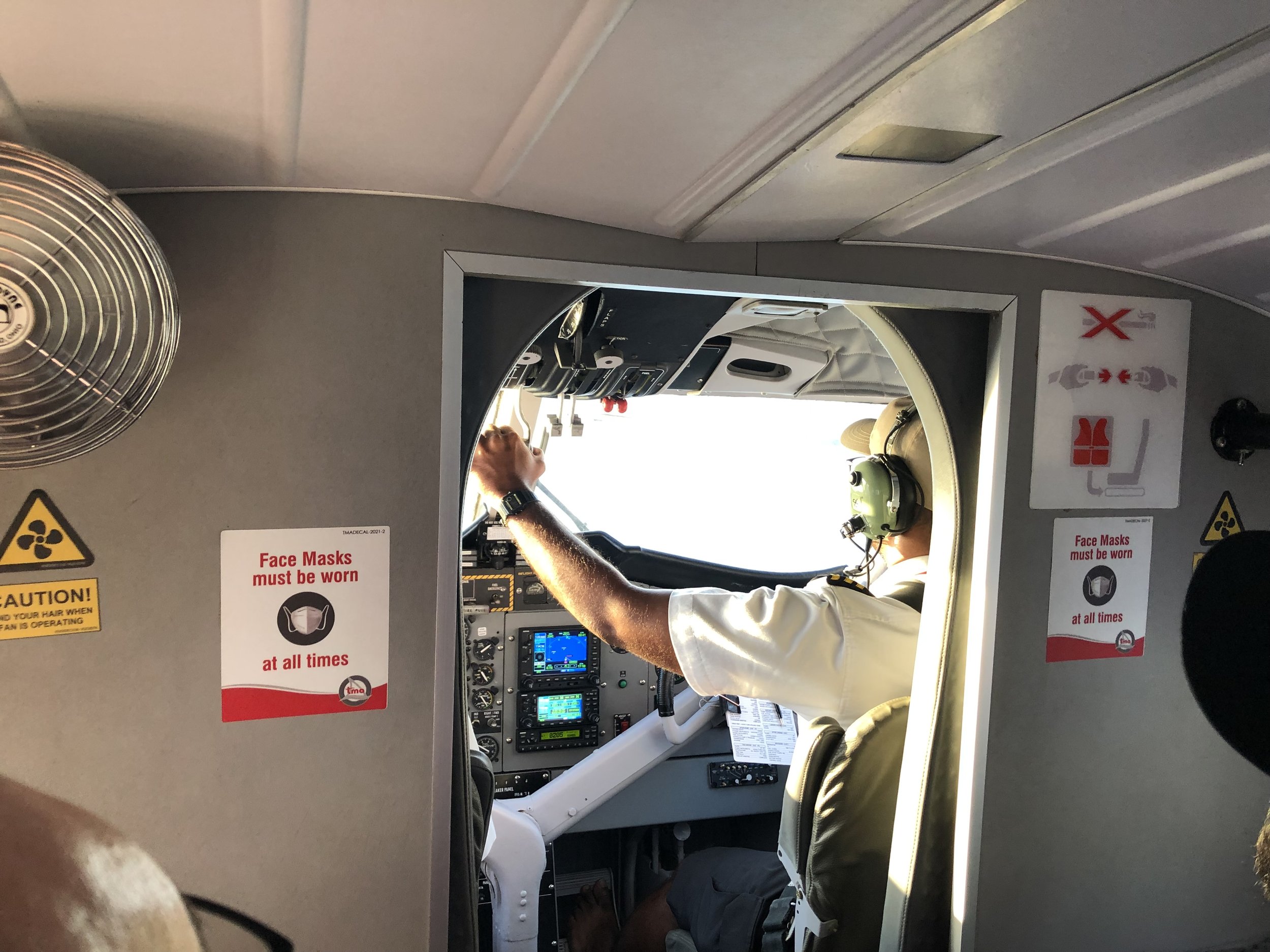
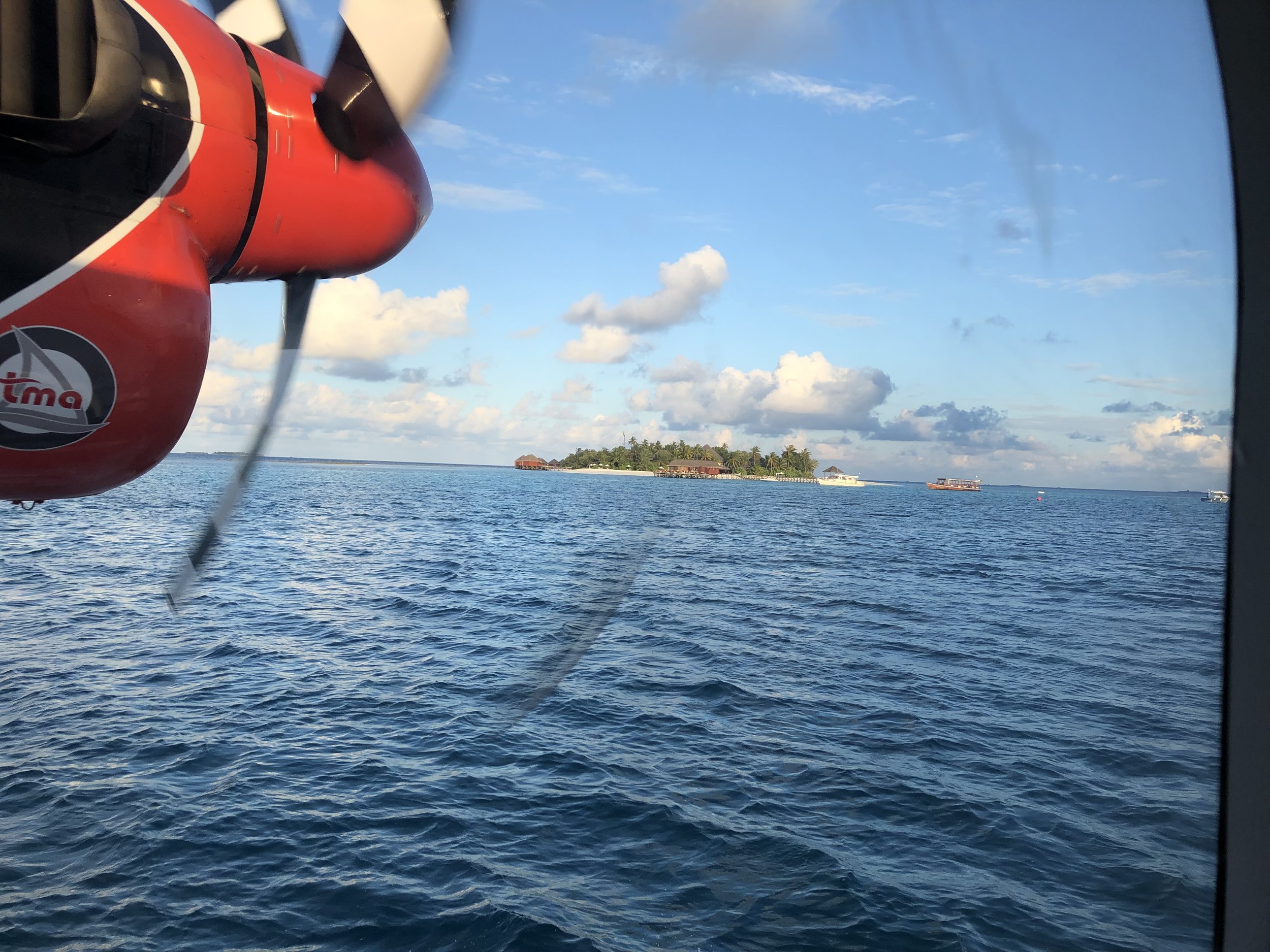
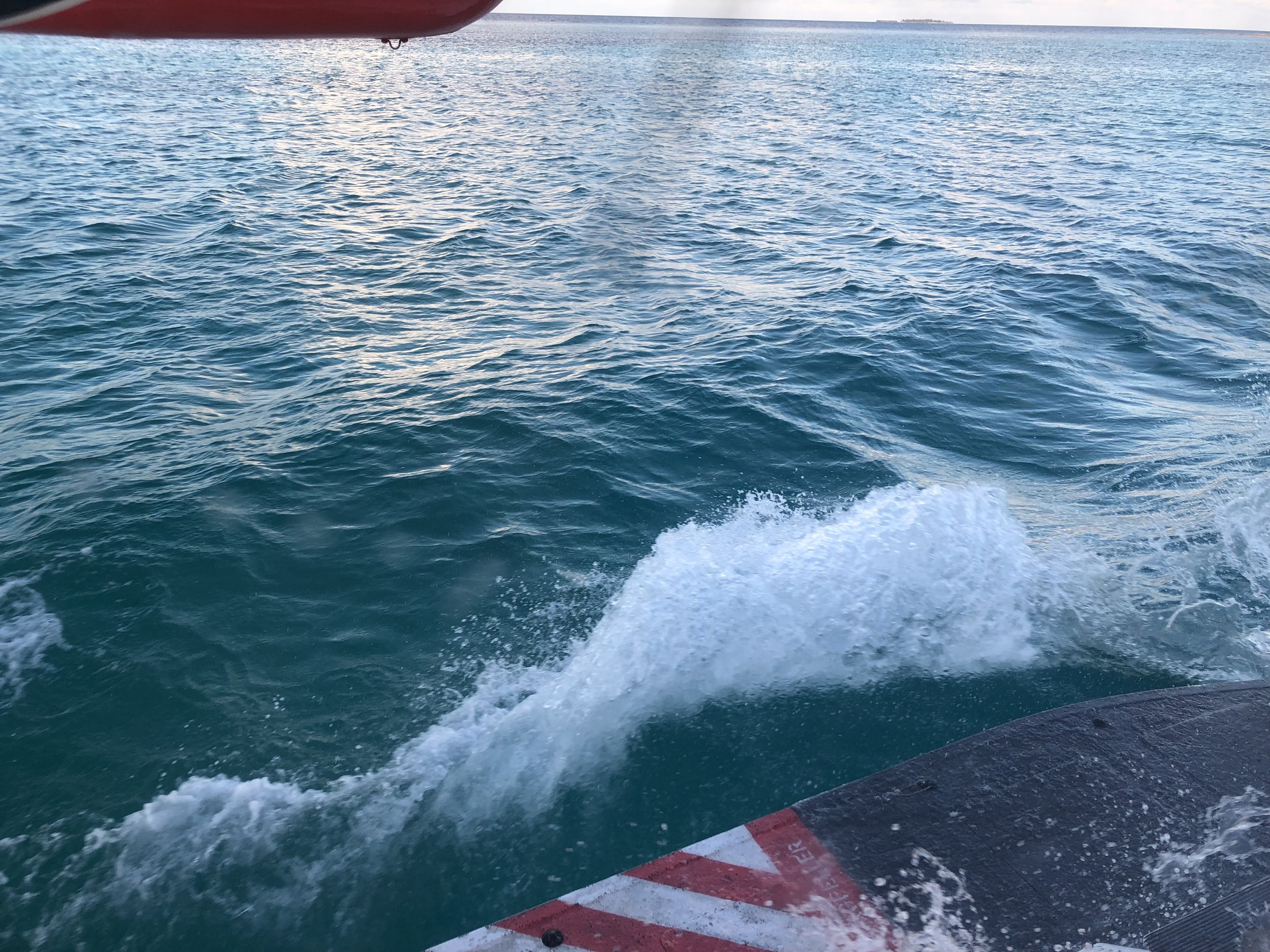
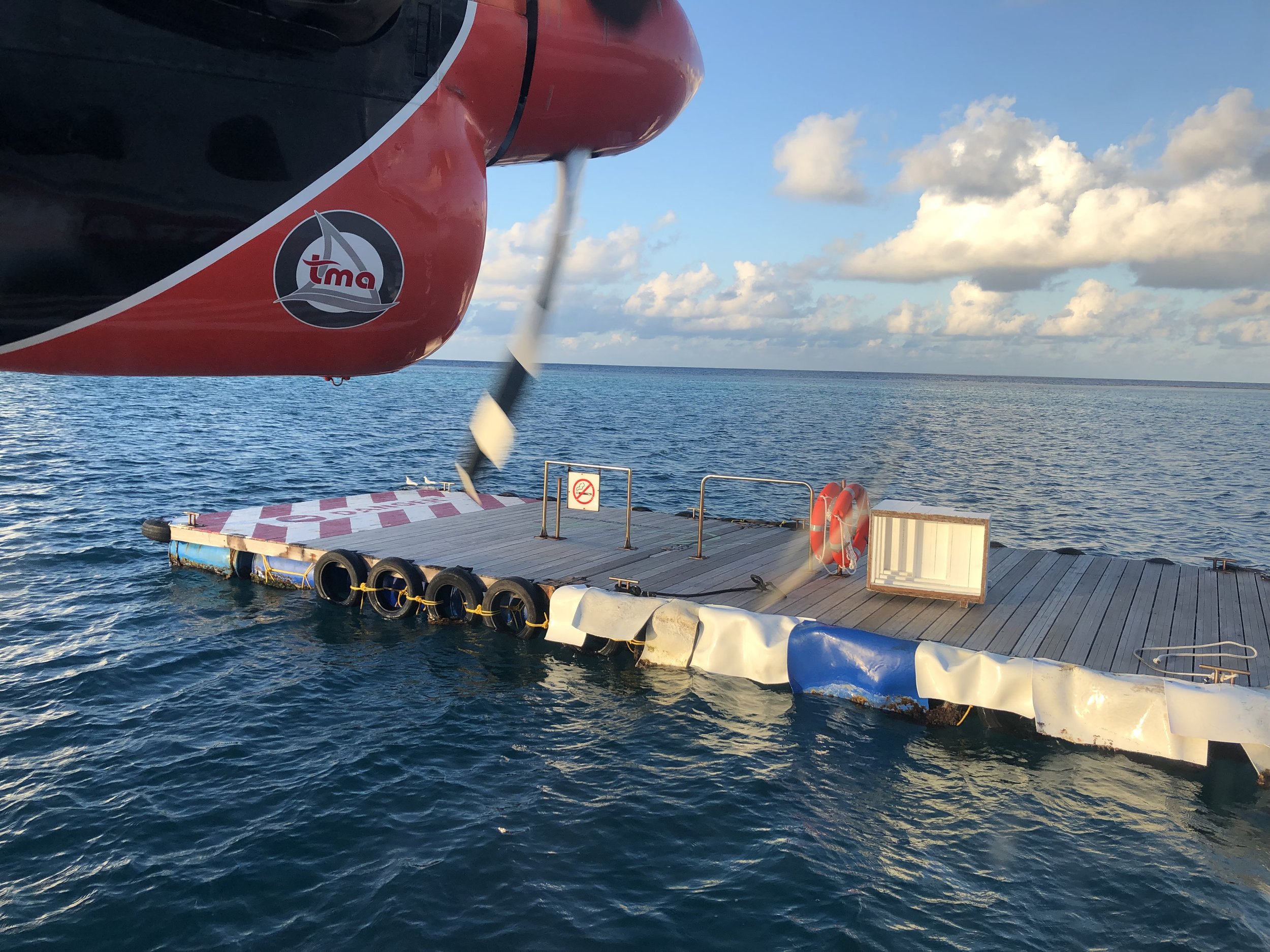
Flying on a seaplane is quite an adventure. It will leave you with lots of positive sensations and unique memories. If you are traveling to a destination that requires a transfer, and there is a choice between a boat and a seaplane, go for a seaplane. You will not regret it!
Have you flown on a seaplane? Share your comments and memories below.






